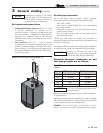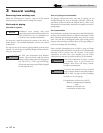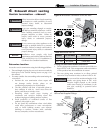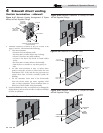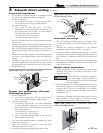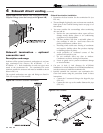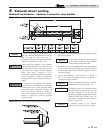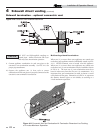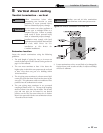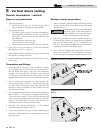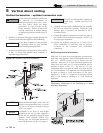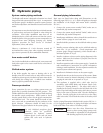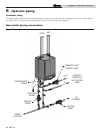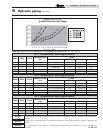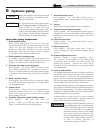
Installation & Operation Manual
23
5 Vertical direct venting
Vent/air termination – vertical
Follow instructions below when
determining vent location to avoid
possibility of severe personal injury,
death or substantial property damage.
Installation must comply with local
requirements and with the National Fuel
Gas Code, ANSI Z223.1 for U.S.
installations or CSA B149.1 for
Canadian installations.
Determine location
Locate the vent/air terminations using the following
guidelines:
1. The total length of piping for vent or air must not
exceed the limits given in the General Venting section on
page 15 of this manual.
2. The vent must terminate at least 3 feet above the
highest place in which the vent penetrates the roof and
at least 2 feet above any part of a building within
10 horizontal feet.
3. The air piping must terminate in a down-turned 180°
return pipe no further than 2 feet from the center of the
vent pipe. This placement avoids recirculation of flue
products into the combustion air stream.
4. The vent piping must terminate in an up-turned
coupling as shown in FIG. 5-1. The top of the coupling
must be at least 1 foot above the air intake. The air inlet
pipe and vent pipe can be located in any desired
position on the roof, but must always be no further
than 2 feet apart and with the vent termination at least
1 foot above the air intake.
Figure 5-1 Vertical Termination of Air and Vent
5. Locate terminations so they are not likely to be damaged by
foreign objects, such as stones or balls, or subject to buildup
of leaves or sediment.
ƽ WARNING
NOTICE
ƽ WARNING
Do not connect any other appliance to
the vent pipe or multiple boilers to a
common vent pipe. Failure to comply
could result in severe personal injury,
death, or substantial property damage.
ƽ WARNING
Rooftop vent and air inlet terminations
must terminate in the same pressure zone.



